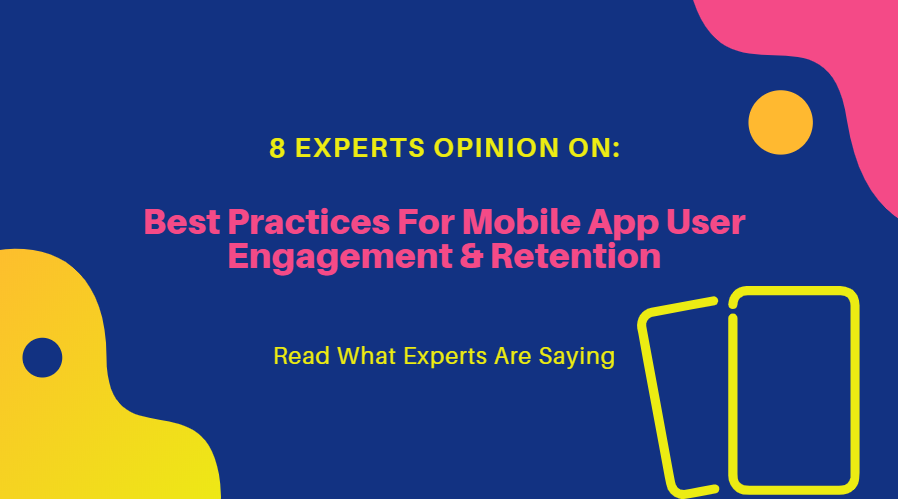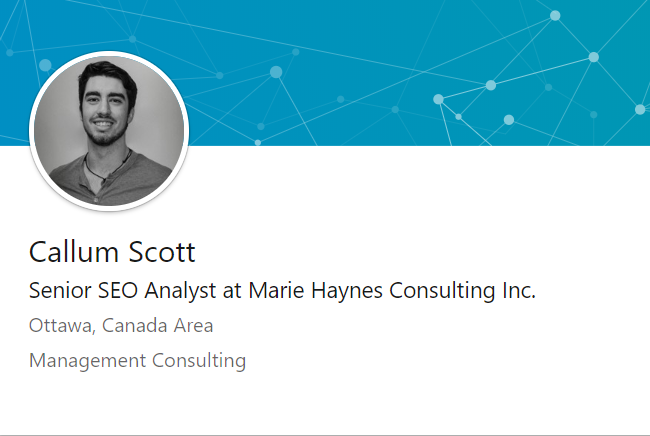There are millions of apps on the market today. And if you consider that new apps are being released every day, then you’ll begin to understand why user engagement and retention can be an arduous task. 1300 apps are added every day. Thankfully, there are time-tested strategies that every app publisher can implement to attract and keep users. And these strategies are equally effective across all industries from retail to media and productivity apps.
Data from Localytics shows that app user engagement and retention has been on the rise since 2017. According to the app data analytics and marketing company, in the early part of this year, the number of users who returned to an app in the second month of downloading it stood at 41%. Meanwhile, 32% returned in the third month, and 28% in the fourth month. This clearly shows that app publishers are doing something right.
These figures are particularly impressive when you consider that analysis from Localytics showed that 71% of apps lost their users within the first 90 days in 2016.
Experts like Nicole Hendrick from Buildinary will tell you that a low app user engagement rate highlights a disparity in the expectations of users and what you provide them. This is to be expected since the mobile app market continues to grow at a rapid rate. The only way to bridge the gap is for marketers to continually update their strategies according to the changes in user behavior.
With that said, before we look at some of the best ways to guarantee user engagement and retention on your app, let’s see what some of the other experts have to say.
Contributed by Nicole Hendrick, the CEO & Co-Founder of Buildinary
8 Experts Opinion On Best Practices For Mobile App User Engagement & Retention 2024
1) Shane Barker | Digital Strategist | Owner of Shane Barker Consulting
While 800 apps are downloaded every second from the Apple App Store, nearly 22% of them are never used more than once. With so much competition, you really need to level up your app marketing strategy to get people to use your app.
I would say that the best way to get people to engage with your app is to create a great product. Make sure that your app has compelling, entertaining, and useful features that provide value to the users.
You should also leverage personalization to better engage users. This includes using:
- User segmentation
- Contextually-relevant in-app messages
- Events to trigger engagement
- Upgrade options
- New features
- Sales and coupons All of the above can help you better engage users and compel them to return.
2) Allison Reed | Chief Editor & SEO at MotoCMS
How many marketing channels should you use for maximum app user engagement and retention? Undoubtedly, the right answer is all the existing ones. Moreover, all these channels should be user-centered. This means that they should enable your users to navigate between all your touchpoints seamlessly and with ease.
According to Invesp, companies employing omnichannel marketing strategies are able to retain up to 89% of their customers. At the same time, those with the weak omnichannel experience can boast only 33% customer retention rates. The conclusion is quite evident. With omnichannel experience, you increase your chances more than twice.
Each omnichannel experience starts with leveraging of multiple channels to communicate with users. Wherever your user goes, make sure that you are there. Your website and blog, as well as social media platforms, are vital to connect with users and engage them. Besides, email campaigns and SMS alongside with targeted ads and pop-ups aren’t less important.
However, multiple channel experience isn’t the omnichannel until it provides a flawless transition between different channels and consistent messaging across each of them. Here are the two main facts to consider. Firstly, your users interact with you via different channels. Secondly, they rarely limit themselves to a single device. If you want to engage and retain your users you should:
- Take care of seamless user experience by making all your channels work together. For instance, you’re a retailer. Then your users should have an opportunity of adding items to the shopping cart in the app, asking questions via social media accounts, and checking out through your site. In a word, whatever channel your users choose for interacting, you should offer them the same level of service.
- Provide them with ergonomic navigation, easy access, and uniform experience across various devices. In other words, ensure synchronized experience on various mobile platforms, from Android to iOS and from smartphones to wearable devices.
3) Callum Scott | Senior SEO Analyst at Marie Haynes Consulting
For a lot of people, optimization for mobile apps is mainly focused on App Store Optimisation (ASO). However, around a third of app downloads outwidth the app store in 2018 came from organic search. So having a strong SEO game and getting your brand’s app to appear in the SERPs can be a good secondary channel for getting those much sought after app installs.
While Mobile apps show up in the mobile SERPs from paid search, they also show up for organic.
For on SERP optimization, make sure your app name, no. of ratings, text fragment is consistent and well optimized. So far as optimizing to win these SERPs, from our experience at MHC, having strong organic rankings for similar terms for your website appears to be a big factor.
Make sure there are as many signals as possible relating your site/company as an entity, with the mobile app you are trying to rank. Be sure to reference the app directly on your site, chose an App name (or site name) that is strongly connected to your brand, and you can try using Mobile Application schema markup where appropriate as well.
4) Mike van Hoenselaar | Owner of Growth Hacking Agency Online Boswachters
If you are low on budget, User engagement and retention should be your top priorities. Especially at early stage startup or scale-ups. Online Boswachters is currently working actively for RestaurantKaart. A company where retention and user engagement is the number one priority because it’s a SaaS company.
People need to receive enough value every month so the churn will be as low as possible. You can give incentives to acquire new users i, but if the onboarding is terrible people won’t understand the core value of your mobile app and will churn regardless of what you offered them in the beginning.
5) Lilach Bullock | Digital Marketing Expert | Owner of LilachBullock.com
There are so many apps available that it can be very difficult to get people to try out your app. And even when they do try it out, there’s always the danger that they could find a better option in the app store and just switch on a whim.
That’s why it’s incredibly important that you start out with an amazing product: before you release it, make sure that it works perfectly; after you release it, make sure you’re not only listening to your customers and their comments/feedback but that you’re constantly looking for ways to improve your app, as well as the overall user experience.
Beyond having a great product – and generally offering a great user experience – you also need to make the onboarding process as simple as possible. That starts with the initial set up: don’t ask for too much information and don’t make the process too complicated or people will just remove your app and try something else.
Another essential part of the onboarding process is educating the user on how to leverage the tool. At this stage, you shouldn’t overwhelm your new users, but rather try to show them, step by step, how they can make the most out of your tool. Simple, one-sentence instructions can go a long way and you could also consider creating a short video highlighting all the main features (and make sure it’s easy to follow even without the sound on!), as well as using well-placed calls to action to get people to take the actions they need in order to make the most of your app.
Plus, make sure users have easy access to your app FAQs and other help files, as well as an easy and obvious method of reaching out to you for help.
Once you’ve got new users hooked on your product, it’s time to up the ante a bit and makes the user experience as amazing as possible:
- Gamify your app where possible to engage users and get them excited to use your app time and time again. You can do so, for example, by offering rewards to users as they take certain actions
- Personalize the user experience using the data you have available – gone are the days when identical user experiences were the norm. Now, apps and tools are increasingly leveraging personalization to make the user experience unique and exciting for each particular user
- Leverage email marketing to remind people to use your app again, as well as to share tricks on how they can make the most of the app and let them know about any new exciting features coming up
Add a “push notifications” option to re-engage users when needed. However, make sure not to overdo it: if you send too many push notifications, some users will choose to stop the notifications, while others might simply remove your app completely. So, use push notifications sporadically but regularly: only when truly needed.
Look at them as a tool to help users rather than a tools to get people using your app: for example, if a social media app reminds me that I need to schedule out my posts for tomorrow, then I’ll definitely be grateful for the nudge; if instead, I’m getting several notifications simply telling me that my app is waiting for me, then I’m most likely going to stop the notifications altogether – and if I don’t like the app that much anyway, I might just try something else
Gamification in regards to engagement and retention
6) Julia Blake | Chief Editor at DesignWebKit
Gamification is one more proven practice that works well for mobile app user engagement and retention. Why is it effective? It’s all about simple human psychology. The key components of gamification include competition and achievements. Thus, it appeals to simple human desires of self-expression, status, and reward. The best thing is that gamification guarantees great results in any kind of context. There’s almost no app where its elements are not appropriate.
Gamification can really work wonders in quite different spheres. According to the Yu-kai Chou Case Study, gamified training programs of Deloitte took 50% less time to complete. Moreover, they massively improved long-term engagement. Another great example is Idea Street (the Department of work in the UK). Thanks to gamification, it made 120,000 people contribute 4000 ideas, with 63 of them implemented in the marketing department.
Of course, no one says that it’s necessary to turn your mobile business app into the game. However, you will definitely benefit from the smart use of gaming elements. Whether you offer your users to compete against others, score points or rank in leaderboards it undoubtedly increases motivation. Since your users know that they can win something, the majority will continue interaction until they get their reward. The only thing to remember is that the reward you suggest should be of real value to them.
While implementing gamification, consider the following:
- Define your objectives clearly. Understand the result you want to achieve with gamification.
- Study your users to add value. Choose a reward according to your users’ interests and needs.
- Don’t overdo with a push towards the desired action not to cause your users’ irritation.
- Provide sharing options on social networks to take advantage of word-of-mouth.
- Think of fast redeemable rewards available every time your users complete the action.
Steps to Improve App User Engagement and Retention
1. Push Notifications and In-App Messaging
The adage that communication is the key to building relationships is also true in the world or mobile apps. In-app messages and push notifications are an effective way to reach out to users.
In-app messages can be useful for boosting user engagement. You can use in-app messages to explain the features of your app to users and make the onboarding process easier. These messages are also an excellent way to inform users about promotional offers and the latest developments on your app. Push notifications, on the other hand, can be used to remind users of your app and improve its retention rate. You can use these notifications to draw users back to pick up from where they left at their last session. This is also a great way to inform users about promotional offers. Essentially, push notifications must give users a reason to want to return to your app.
Data from Localytics shows that engagement with push notifications increased by 31.34% for Android and 23.55% for iOS in the first half of this year compared to 2017. But while in-app messages and push notifications can improve user engagement and retention, they can have the opposite effect if they aren’t used properly. Here are a few tips to improve the success rate of in-app messages and push notifications:
a) Take advantage of user data to send relevant messages.
b) Do not bombard your users with notifications. Ideally, push notifications should not be sent daily.
c) Also, give users the option of choosing not to receive them. This can seem counterproductive, but push notifications, and in-app messages can be annoying for users who are highly engaged with an app. What’s more, you can use email to reach users who opt out of push notifications and in-app messages.
2. Make the Onboarding Process Smooth
Have you ever downloaded an app and found yourself wondering how it functions? It was a big put-off, wasn’t it? You must avoid making the same mistake with your app. Very few things can make users fall in love with an app like being able to operate it intuitively. Usually, developers are engrossed with the intricacies of their app and fail to consider how it looks to first-time users. This is why it is recommended that you work with mobile app development companies or developers. These experts can conduct an analysis of your user experience (UX) with “fresh eyes.” Among other things, they would highlight the issues with your UX and suggest ways to remedy them.
A smooth onboarding can boost user retention rate by up to 50%. Nicole Hendrick points out some ways to make the onboarding process of your app smooth.
a) Test your app extensively to identify and correct any performance issues.
b) Don’t overload users with information. Keep the design of your app simple so that everyone can use it easily. Also, provide concise information about how to operate particular features when necessary. If you find that you have to provide a lot of information about how to use your app, then you need to go back to the drawing board and work on the design of your user interface to make it intuitive.
c) Keep the signup process short, and give users access to your app. Leave an option for users to update their profile later.
d) If your app is not free, make a demo version available.
3) Personalization
Another strategy that never fails to boost user engagement and retention is personalization. Everyone wants an experience that is suited to their preferences and location. Therefore, if you give users an experience that is tailored to them, they are likely to spend more time on your app. Take advantage of user data to increase the personalization options on your app.
The positive effects of personalization do not only hold true for mobile apps, but for other businesses. According to Gartner, personalization would enable digital businesses to boost their profit by up to 15% by 2020. Data from Everage shows that currently, just 18% of marketers include personalization as part of their strategy to reach users on mobile apps. This indicates that this strategy is still highly underutilized in the mobile app sector. It also means that personalization is likely to work wonders for the few apps which use it.
There are many ways to increase personalization in an app:
a) Display relevant content based on each user’s preference.
b) Deliver personalized greetings to each user. This may seem to be a minor thing, but it can go a long way to endear users to your app.
c) Measure user behavior properly. A thing too many companies forget. Implementing apps such as Firebase and Segment to measure behavior properly makes measuring progress and optimization much more easy. You can also test your app on multiple devices to speed up the testing cycle through the Appium mobile testing site.
4) Offers Users Incentives
Very few things can beat incentives when it comes to boosting user engagement and retention. Giving users rewards does not only increase their engagement with your app but also builds loyalty. The particular incentives to offer users depends on your app. Some attractive offers include discounts as well as coupons, free products, and other prizes.
The underlying rule is to provide users with something valuable. Some of the most successful apps in the world like Starbucks, Airbnb, and Amazon have successfully used incentivization to strengthen their brand. Airbnb was able to increase signups and bookings by more than 300% through incentives. Offering users incentives makes a lot of sense when you consider that it costs considerably more to reach an existing customer than a new one. But rewards do not only work for existing customers, but also for new customers.
7) Neal Schaffer | CEO of Social Media Agency PDCA Social
For “Offer Users Incentives” don’t just assume that users will download your app. If you have a website, you should offer something of more value in your app in consideration that the world is going increasingly mobile. Give people not only a reason to download but also to use your app. Different incentives can go a long way, but it’s important to let users know that they will be most incentivized by downloading your app if you truly want to push downloads.
For “1. Push Notifications and In-App Messaging”, marketers tend to see notifications as the Holy Grail of mobile marketing and immediately start spamming upon download. Give your app users a choice as to how often they can receive valuable notifications – for instance, daily, weekly, monthly, or quarterly – and you might have more people actually turn on the notifications for your app.
Quick Links:
- SEO Tips From the Experts [Infographic]
- 14 SEO Experts Roundup On- No.1 Secret For Traffic Source For 2024
- 22 SEO Expert Roundup- Best SEO Strategy For Small Businesses 2024
- 9 Social Media Experts Roundup (Best Social Media Tools For Brand Tracking) 2024
Conclusion: Best Practices For Mobile App User Engagement & Retention 2024
These are some of the best practices to attract and keep users on your app. There are many equally good strategies such as adding gamification to your app, learning more about your users, integrating social media, and providing a valuable product/service.
The particular user engagement and retention strategies to use depends on the type of app you have and the demographics of your users. Ultimately, your strategies must evolve as your app grows and as the market changes. What worked five years ago may no longer be effective today.











